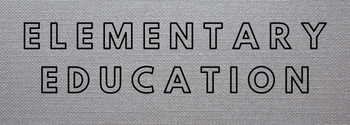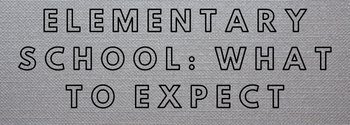Master The Art Of Wood Writing: Techniques And Tutorials
Wood has been an essential material for human civilization for centuries, providing us with shelter, warmth, and a variety of useful objects. However, in recent years, it has also become a popular medium for art and crafts. The possibilities of creating unique and personalized designs on wood are endless. From elegant calligraphy to bold lettering, there are various techniques you can use to transfer words onto wood surfaces. In this article, we will explore the top 10 wood transfer techniques that you can use to create stunning writing on wood. Whether you are a beginner or an experienced artist, these techniques will help you achieve beautiful and professional-looking results. So lets dive in and discover how to transfer ink, letters, and words onto wood.
Introduction to Wood Transfer Techniques
Wood has been a popular medium for centuries, used in art, furniture, and home decor. However, when it comes to adding text or lettering onto wood, many people are unsure of the best techniques to use. Fortunately, there are several methods for transferring writing onto wood that are easy to learn and produce beautiful results. In this article, we will explore various wood transfer techniques that you can use to add text to your wooden projects.
1. Writing on Wood Tutorial
Before delving into specific wood transfer techniques, its important to understand the basics of writing on wood. The surface of wood is not as smooth as paper, making it more challenging to create clean and crisp lines. Its essential to use the right tools and techniques to ensure that your writing appears legible and professional.
First, its crucial to choose the right type of wood for your project. Some woods have a smooth surface, while others have rough grains. A smoother wood surface will make it easier to transfer your writing onto the wood.
Next, make sure to have all your materials ready before starting, including sandpaper, a pencil, transfer paper, ink pens, and a sealer (if desired). Sanding the wood before transferring your writing will help to create a smoother surface and prevent the ink from bleeding.
2. Transfer Ink onto Wood
One of the most popular methods for transferring writing onto wood is by using transfer paper. This special type of paper is coated with graphite on one side and can be found at most craft stores. To transfer your writing, first, print out the text onto regular paper. Then, place the transfer paper with the graphite side facing down onto the wood, followed by the printed paper on top. Use a pencil to trace over the letters, pressing firmly to transfer the graphite onto the wood. Finally, remove the papers, and you should see your writing transferred onto the wood.
3. Wood Burning Lettering
Wood burning, also known as pyrography, is a method of using heat to burn designs or lettering into the surface of wood. This technique requires a wood-burning tool, which can be found at most craft stores. The tool has various tips to create different line thicknesses and patterns. To transfer your writing onto the wood, first, print out the text and place it on top of the wood. Use a pencil to trace over the letters, pressing firmly to leave an indentation on the woods surface. Then, use the wood burning tool to trace over the indentation, burning the letters into the wood.
4. Transferring Words to Timber
Another simple method for transferring words onto wood is by using plain white paper and a ballpoint pen. First, print out the text onto the paper and cut it to fit the size of your wood. Place the paper onto the wood, with the ink side facing down. Use a ballpoint pen to trace over the letters, pressing firmly to transfer the ink onto the wood. Once done tracing, lift the paper to reveal your writing transferred onto the wood.
5. Decoupage Writing on Wood
Decoupage is a popular technique for adding designs and images to wood, but it can also be used to transfer writing onto wood. For this method, you will need a laser-printed text, decoupage glue, a foam brush, and a sealer (if desired). First, apply a coat of decoupage glue onto the wood surface, then place the printed text face-down onto the wood. Smooth out any bubbles or wrinkles and let it dry completely. Once dry, use a wet cloth to gently rub away the paper, revealing your writing transferred onto the wood. Finally, seal the wood with decoupage glue or a clear sealer to prevent smudging.
6. Print Writing on Wood
If you have a printer that uses inkjet transfer paper, you can easily print your writing directly onto the wood. This method requires some trial and error to get the right settings and positioning, but it produces clean and precise results. First, print out the text onto the transfer paper, following the instructions provided. Place the paper onto the wood with the ink side facing down, press firmly, then peel off the paper to reveal your writing.
7. Calligraphy on Wood
Calligraphy is an elegant and decorative form of handwriting, and its also possible to create calligraphy on wood. For this method, you will need a calligraphy pen, ink, and a lightbox. Print out the text onto regular paper, place it on top of the wood, and use the lightbox to trace over the letters onto the wood. Then, use the calligraphy pen to go over the traced letters, creating the desired calligraphy style.
8. Stencil Wood Lettering
Using stencils is an easy way to transfer lettering onto wood, especially if you are not confident in your handwriting skills. You can purchase pre-made stencils or create your own by printing out the text and cutting it out with an X-acto knife. Place the stencil onto the wood and use a brush or sponge to fill in the letters with paint or marker. Once the paint is dry, remove the stencil to reveal your transferred writing.
9. Transfer Text to Lumber
For larger projects like wooden signs or furniture, you may want to transfer larger pieces of text onto lumber. In this case, using a projector can be an effective method. First, print out the text onto a transparency sheet and prepare your lumber by sanding and applying a base coat of paint. Then, use a projector to display the words onto the woods surface, adjust the positioning as needed, and trace over the words with a pencil. You can then fill in the letters with paint or marker.
Conclusion
Adding text or lettering onto wood is a great way to personalize and add character to your wooden projects. With the various transfer techniques discussed in this article, you can easily create professional-looking writing on wood. Experiment with different methods to find the one that works best for you. Remember to always sand and seal the wood before transferring your writing to ensure the best results.
For more information on modern technology in translation, including its contributions and limits, check out this article. Incorporating technology into traditional wood transfer techniques may also offer new and exciting possibilities for creating stunning designs on wood. With a little practice and creativity, you can turn any piece of wood into a work of art.
In conclusion, there are a variety of wood transfer techniques that allow for beautiful and unique writing on wood. From using ink transfers to wood burning and even decoupage, the possibilities are endless for transferring words onto timber. Whether its calligraphy, stenciling, or printing, these methods provide a creative way to add lettering to wooden surfaces. With some practice and experimentation, anyone can master the art of writing on wood and create personalized and meaningful pieces. So go ahead and try out these different techniques to elevate your woodworking projects and bring your words to life on wood.



